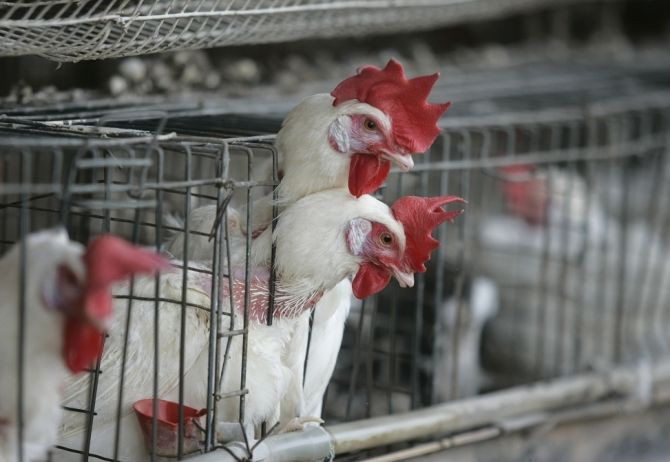Chicken And Beef Most Riskiest Meats To Eat

If you're a Ron Swanson who obsessively eats, dreams and sleeps meat, sorry to be the bearer of bad news. A recent analysis by the Center for Science in the Public Interest, CSPI, found that chicken and ground beef are the culprits of the most foodborne illnesses for meat and poultry cases in the United States.
"Outbreaks from ground beef and chicken are reported frequently, and all too often cause debilitating illnesses-illnesses that lead to hospitalization," said Caroline Smith DeWaal, CSPI food safety director. "For example, approximately a quarter of those who are sickened by Salmonella will go to the hospital. The hospitalization rate for E. coli infections is nearly 50 percent for Listeria infections it is more than 90 percent."
Following chicken and ground beef, which toppled the list with 452 and 336 outbreaks, respectively, is other forms of beef with 99 outbreaks, steak with 82 and turkey with 130.
At the bottom of the list is chicken nuggets, ham and sausage, which reported to far less outbreaks and illness cases.
Different bacteria contribute to these severe cases of outbreaks. Salmonella caused the most impact for chicken and ground beef cases, while Clostridium perfringens and Norovirus also contributed. But clostridium caused most of the outbreaks among other beef, steak and turkey. The CSPI believe leaving turkey out on the table too long lead to the most outbreaks during the Thanksgiving and holiday season. For these meats not only should they be cooked thoroughly but kept at temperatures warmer than 140 degrees or cooler than 41 degrees Fahrenheit after servings or risk growing the bacterial spores.
But we can't forget about the upcoming barbecue season. Salmonella, Clostridium and Staphylococcus also contribute to outbreaks in the barbecue category for beef and pork, which was ranked "medium risk" along with deli meats.
"Meat and poultry producers must bear primary responsibility for keeping pathogens out of their products, but when it comes to beef, chicken, and other raw meats, restaurateurs and home cooks must treat them like hazardous materials and take steps to minimize risks," said Sarah Klein, CSPI senior food safety attorney. "Care should be taken to avoid spreading germs from the meat around the kitchen, and meat thermometers should be used to ensure that ground beef, chicken, and other meats are fully cooked."
The U.S. Department of Agriculture recommends cooking at different temperatures for whole cuts of pork and other meats so they're free of bacteria. Pork should be cooked between 160 degrees to 145 degrees, while other meats such s beef, veal and lamb cuts cook at 145 degrees. Both require additional three-minute rest time.
For the risky ground meats and poultry, the cooking temperature should be 160 and 165 degrees, respectively.



























